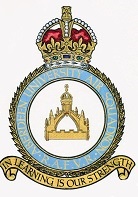
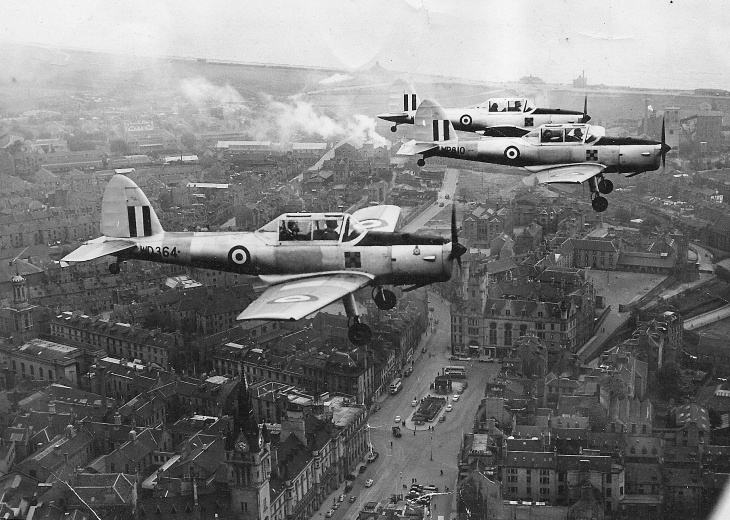
Above: AUAS Chipmunks over Aberdeen c1960
The Beginning
In 1925, as part of the creation of reserve forces for the relatively new Royal Air Force, Lord Trenchard instituted a Volunteer Reserve air squadron at Cambridge University to encourage suitable young men of good education to join the newly-formed Royal Air Force – or at least look upon it with favour when they formed the ranks of government or occupied other high echelons of society. That was followed three weeks later by the creation of a similar squadron at Oxford and in 1935 a third squadron at the University of London.
Then, in 1940, because of the attrition of aircrew and the need to recruit replacements and expand their numbers, Aberdeen University Air Squadron was created, along with those at the other three ancient Scottish universities and some older English ones, as part of the expansion of the RAF Reserve to prepare undergraduate men volunteering for aircrew duties for call-up for war service. At least two of these squadrons, Aberdeen and St Andrews, also provided short direct entry initial (officer) aircrew training course centres for non-undergraduates – mainly older and mainly English public schoolboys – who did not attend university as such but went on to aircrew training centres at the end of their six-month course.
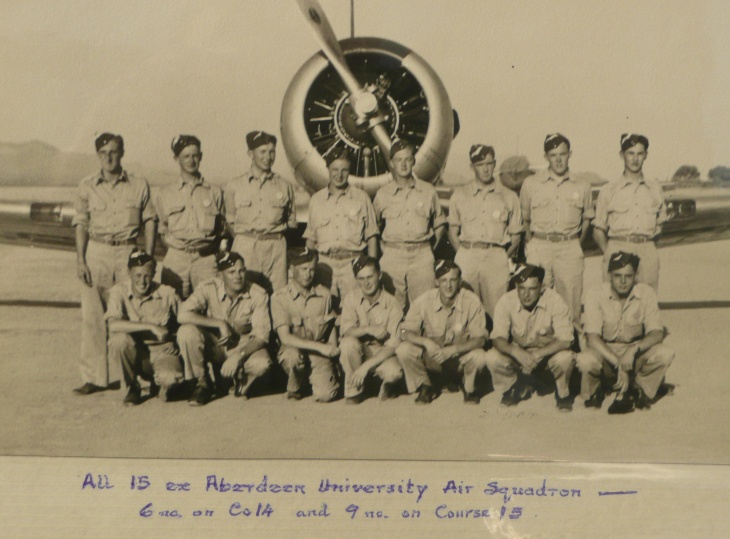
Above: Former AUAS students on flying training in the US in 1942. We have the names of
most in the photo but not all. Get in touch with Rob if you can help identify everyone!
After discussions with the University’s newly-created Military Education Committee headed by the Principal, recruiting for AUAS began in earnest under its first CO, Wing Commander Streatfield, temporarily rested from his post as CO of one of the Blenheim bomber squadrons then based at the newly-created RAF Dyce. Among others to join him later as instructors were Professor Edward M. Wright, later Principal of the University and at the time the head of the University’s Maths Department and himself ex-Oxford UAS who later joined the code-breakers at Bletchley Park, and Dr Potter, one of his Maths Department staff.
Before long, several of the University’s undergraduates had joined the squadron and were duly called up into active service – mainly as pilots or navigators or flight engineers. Some, a number of whose names appear in the Squadron history and photo albums now held in the University Library, were killed in action. Many others returned at the end of the war to complete their studies and graduate.
At least three of the young men who joined as soon as they were able to in January 1941, and lived through wartime service to tell the tale, are currently members of the AUAS former members’ association.
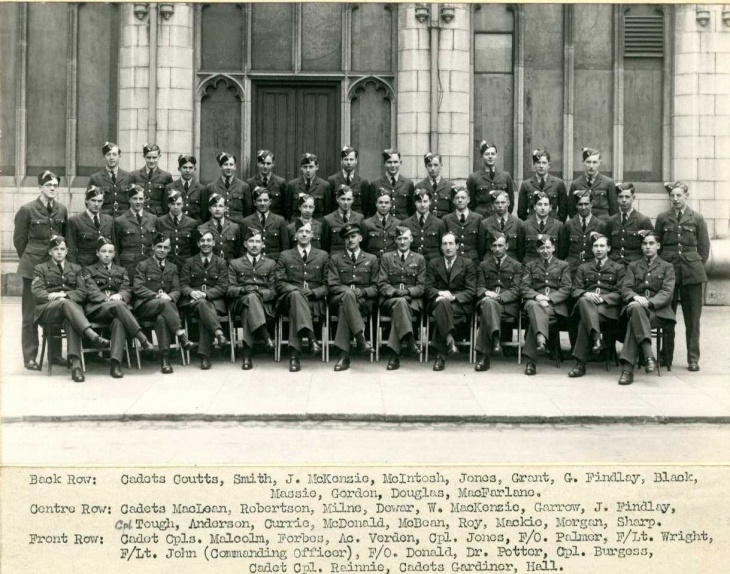
Above: The first known photo of AUAS, taken in June 1943. Included in the front row are Professor Edward Wright of the Maths department (himself ex-Oxford UAS and then an instructor in AUAS, and later the University Principal) and Dr Potter, also of the Maths department.
Notable Events
After the war, the Air Ministry decided to disband all University Air Squadrons since the Service now had too many aircrew and recruits were no longer needed. However, the University of Aberdeen’s Military Education Committee, led by the Principal, Sir William Fyffe-Hamilton, strongly disagreed with that proposal, believing that the UAS was a good thing for the University. Sir William went to London and persuaded the Air Ministry with much conviction that they were wrong, therefore almost single-handedly saving the entire University Air Squadron part of the Royal Air Force Volunteer Reserve, which now reverted to its role of encouraging young men of good education to consider joining the RAF as pilots or navigators or at least to become air-minded. Flying training up to the standard of the rest of the RAFVR was instituted and resulted in many members joining the full-time service.
Over the years, many able personnel, male and female, of several disciplines entered the Service in greater numbers than many other UASs - many achieving the highest ranks - and flew almost all the aircraft ever to have been operated by it. In recognition of that, in 1966 virtually the entire Air Staff, led by the Chief of the Air Staff, Air Chief Marshal Sir Charles Elworthy, attended the squadron’s 25th Anniversary Dinner in Elphinstone Hall, a rare honour, arriving together at Dyce from London in an RAF Transport Command Comet IV.
In 1957 the rest of the RAFVR was finally disbanded, leaving the University Air Squadrons as the sole remaining part of the RAFVR. In 1981, because of the reduction of the Service generally, Aberdeen UAS was amalgamated with the resurrected St Andrews – now including the new Dundee University – University Air Squadron and then in 2004 was further amalgamated with the UAS serving the Edinburgh universities to form the current squadron East of Scotland UAS, now based at RAF Leuchars.
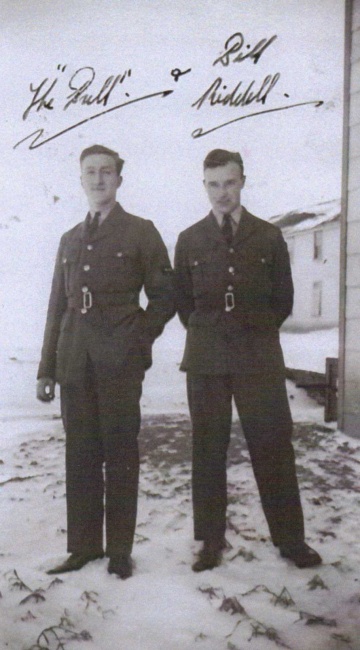
Two University of Aberdeen undergraduates
shortly after call-up for active service
The Former Members' Association
Among our alumni are the very recent CO of one of the Typhoon squadrons, often to be seen flying high over the University, defending our shores - and another of our alumni commanded the same squadron when it had Jaguar fighter jets. Yet another rose to be the Commandant of the RAF Staff College which educated RAF Officers destined for the highest ranks - and at least one was the dedicated Phantom display pilot for the entire RAF. His weekend job was to provide the displays at air shows but his day job was as one of the pilots on an operational squadron. (Several stories of flying fun and frolics involving Aberdeen graduates will be published in the forthcoming third book in the Out of the Blue series, all proceeds from which go to the RAF Benevolent Fund and Help for Heroes charities).
A consistent opinion of those who joined AUAS has been and continues to be that their days in the squadron were the best of their lives and the friends made there have been the best they ever made, and continue to be so, thus in 1989 two of those who flourished in the squadron in the 1960s formed the Former Members’ Association to provide opportunities for social get-togethers and an annual opportunity to take to the air once more. The ten former members, all from the 1960s, were before long joined by others, and the association, unique among these squadrons, was later followed by others from other universities, notably London and Cambridge.
Following the amalgamation of Aberdeen UAS with others (as noted above) membership was extended to the members of the successor squadrons and the organisation now boasts over 500 members worldwide and includes some who first joined AUAS in 1941 all the way through to members of the current joint squadron. The three events held annually by this association, AUASLINK, continue to be well attended.
The Association also has other achievements, including being the first UAS to have its crest hung on the wall of honour in the RAF Club in London alongside those of all the other squadrons in the RAF, and followed by that of Cambridge. It also presented the crest of the most prolific of the Polish fighter squadrons in the RAF in WW2 to honour its contribution to our defence at that time. The members of the current squadron continue to enjoy flying training, and also undertake several charitable projects – both military and civil - every year.
If YOU are ex-Aberdeen UAS and would like to join the Former Members’ Association, contact Rob Christie by email at RobAir82@hotmail.com.
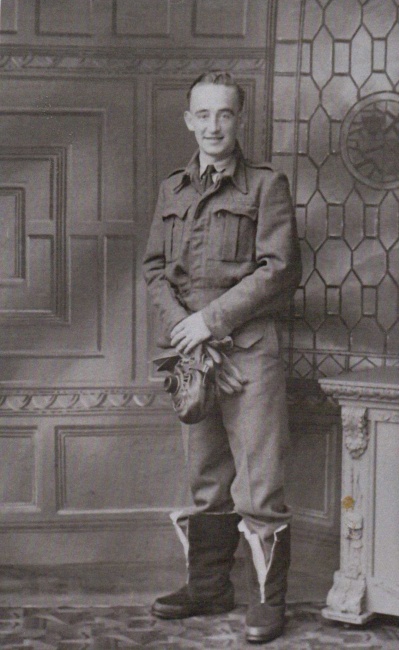
University of Aberdeen undergraduate Iain Macaulay in 1942, who became a navigator and Flying Officer in the RAF


